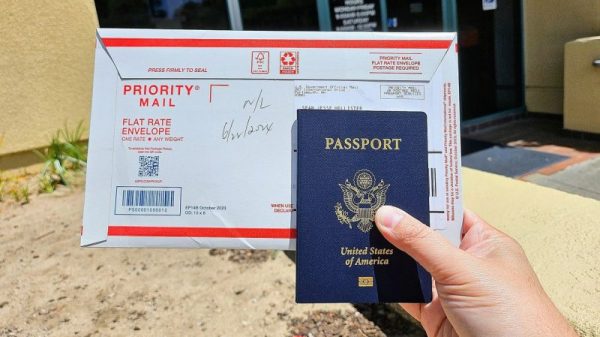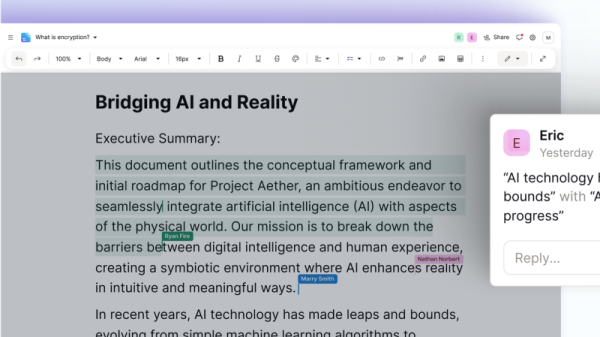President Biden unveiled several measures Thursday aimed at addressing the extreme heat affecting large swaths of the nation, including ramped-up enforcement of safety protections for workers in fields such as construction and agriculture who are most vulnerable to high temperatures.
Speaking from the White House complex, Biden also announced additional funding to improve weather forecasting and grants to help ensure clean drinking water in Western states affected by drought.
The actions come as about 150 million Americans, from the West Coast through the Midwest and into the Northeast and New England, are now under heat alerts and temperatures are expected to approach 100 degrees in the nation’s capital.
“Even those who deny that we’re in the midst of a climate crisis can’t deny the impact of extreme heat is having on Americans,” Biden said in his remarks, which also included practical advice, such as taking bottles of water when going outside and being cautious about hot pavement. He also pointed to a website — heat.gov — that lists resources for dealing with the heat.
Biden was joined virtually at the event by the mayors of Phoenix and San Antonio, two cities that have experienced extended stretches of brutal temperatures.
While intended to help the nation cope with the high temperatures, Biden’s measures fall short of a declaration of a climate emergency that has been advocated by liberal lawmakers and climate activists. Such a designation would unlock far-reaching executive powers, including the ability to block crude oil exports and place other limits on fossil fuels responsible for the planet’s warming.
Rep. Ruben Gallego (D-Ariz.) called Biden’s announcements a “meaningful step” in protecting his constituents from extreme heat but said more remains to be done. Gallego, who is running for Senate in 2024, co-sponsored bipartisan legislation called the Extreme Heat Emergency Act to add extreme heat to the Federal Emergency Management Agency’s list of major disaster-qualifying events.
“We need a swift, immediate deployment of resources, and that requires [the Federal Emergency Management Agency] declaring extreme heat an emergency,” he said in a statement. “I will continue pushing the administration and Congress to get that done.”
Tiernan Sittenfeld, senior vice president for government affairs at the League of Conservation Voters, called Biden’s measures “clearly necessary” but added: “We are obviously in a climate emergency, and we support declaring it.”
“As this record-breaking heat rages on, it’s more important than ever that we move quickly and make more climate progress,” she said.
Biden said Thursday that he has asked the Labor Department to issue a hazard alert, which the White House said will reaffirm that workers have heat-related protections under federal law.
The Labor Department plans to provide information to employers on what they should be doing to protect workers and boost awareness among workers of their rights, Biden said.
Biden said the department also will increase enforcement of heat-safety standards through more inspections in highly affected industries while the Occupational Safety and Health Administration works to develop a national standard for heat-safety rules in the workplace.
Biden said he had heard reports of “construction workers who literally risk their lives working all day in blazing heat and in some places don’t even have the right to take a water break.”
“That’s outrageous,” he added.
Since 2011, more than 400 workers nationally have died because of heat exposure, according to the White House, and thousands more are hospitalized every year.
Biden said the National Oceanic and Atmospheric Administration is spending up to $7 million to improve weather forecasting. The funding is coming from the Inflation Reduction Act, passed by Congress last year, which includes numerous provisions aimed at addressing climate change.
The funding will be used to establish a new consortium focused on “better weather-prediction capabilities” and better use of NOAA’s global observing system, the White House said in a fact sheet. It said that better forecasting will help communities better prepare for periods of extreme heat.
Biden also said the Interior Department is spending $152 million on increasing water storage capacity and other measures in California, Colorado and Washington. That funding is coming from the bipartisan infrastructure law passed by Congress in 2021.
The initiative includes laying conveyance pipelines to deliver safe drinking water for areas impacted by droughts, the White House said.
Biden also touted an initiative in the Inflation Reduction Act that authorized the U.S. Forest Service to award more than $1 billion in grants to help cities and town plant trees.
“In the long term, that will help repel the heat and expand access to green spaces so families have a place to go to cool off and to bring down the temperature in cities,” he said.
And Biden pointed to work by the Department of Housing and Urban Development to make buildings more heat resistant and to open cooling centers.
President Biden unveiled several measures Thursday aimed at addressing the extreme heat affecting large swaths of the nation, including ramped-up enforcement of safety protections for workers in fields such as construction and agriculture who are most vulnerable to high temperatures.
Speaking from the White House complex, Biden also announced additional funding to improve weather forecasting and grants to help ensure clean drinking water in Western states affected by drought.
The actions come as about 150 million Americans, from the West Coast through the Midwest and into the Northeast and New England, are now under heat alerts and temperatures are expected to approach 100 degrees in the nation’s capital.
“Even those who deny that we’re in the midst of a climate crisis can’t deny the impact of extreme heat is having on Americans,” Biden said in his remarks, which also included practical advice, such as taking bottles of water when going outside and being cautious about hot pavement. He also pointed to a website — heat.gov — that lists resources for dealing with the heat.
Biden was joined virtually at the event by the mayors of Phoenix and San Antonio, two cities that have experienced extended stretches of brutal temperatures.
While intended to help the nation cope with the high temperatures, Biden’s measures fall short of a declaration of a climate emergency that has been advocated by liberal lawmakers and climate activists. Such a designation would unlock far-reaching executive powers, including the ability to block crude oil exports and place other limits on fossil fuels responsible for the planet’s warming.
Rep. Ruben Gallego (D-Ariz.) called Biden’s announcements a “meaningful step” in protecting his constituents from extreme heat but said more remains to be done. Gallego, who is running for Senate in 2024, co-sponsored bipartisan legislation called the Extreme Heat Emergency Act to add extreme heat to the Federal Emergency Management Agency’s list of major disaster-qualifying events.
“We need a swift, immediate deployment of resources, and that requires [the Federal Emergency Management Agency] declaring extreme heat an emergency,” he said in a statement. “I will continue pushing the administration and Congress to get that done.”
Tiernan Sittenfeld, senior vice president for government affairs at the League of Conservation Voters, called Biden’s measures “clearly necessary” but added: “We are obviously in a climate emergency, and we support declaring it.”
“As this record-breaking heat rages on, it’s more important than ever that we move quickly and make more climate progress,” she said.
Biden said Thursday that he has asked the Labor Department to issue a hazard alert, which the White House said will reaffirm that workers have heat-related protections under federal law.
The Labor Department plans to provide information to employers on what they should be doing to protect workers and boost awareness among workers of their rights, Biden said.
Biden said the department also will increase enforcement of heat-safety standards through more inspections in highly affected industries while the Occupational Safety and Health Administration works to develop a national standard for heat-safety rules in the workplace.
Biden said he had heard reports of “construction workers who literally risk their lives working all day in blazing heat and in some places don’t even have the right to take a water break.”
“That’s outrageous,” he added.
Since 2011, more than 400 workers nationally have died because of heat exposure, according to the White House, and thousands more are hospitalized every year.
Biden said the National Oceanic and Atmospheric Administration is spending up to $7 million to improve weather forecasting. The funding is coming from the Inflation Reduction Act, passed by Congress last year, which includes numerous provisions aimed at addressing climate change.
The funding will be used to establish a new consortium focused on “better weather-prediction capabilities” and better use of NOAA’s global observing system, the White House said in a fact sheet. It said that better forecasting will help communities better prepare for periods of extreme heat.
Biden also said the Interior Department is spending $152 million on increasing water storage capacity and other measures in California, Colorado and Washington. That funding is coming from the bipartisan infrastructure law passed by Congress in 2021.
The initiative includes laying conveyance pipelines to deliver safe drinking water for areas impacted by droughts, the White House said.
Biden also touted an initiative in the Inflation Reduction Act that authorized the U.S. Forest Service to award more than $1 billion in grants to help cities and town plant trees.
“In the long term, that will help repel the heat and expand access to green spaces so families have a place to go to cool off and to bring down the temperature in cities,” he said.
And Biden pointed to work by the Department of Housing and Urban Development to make buildings more heat resistant and to open cooling centers.























